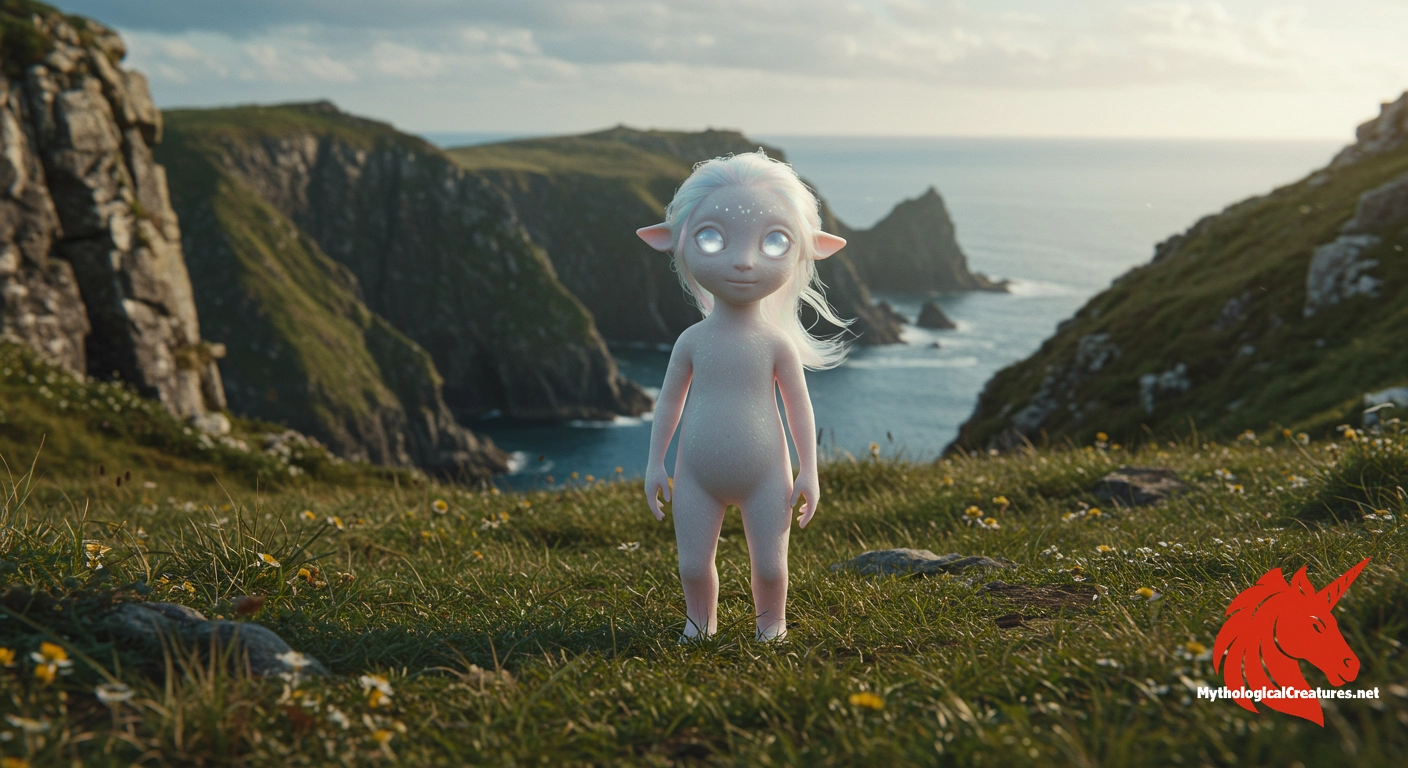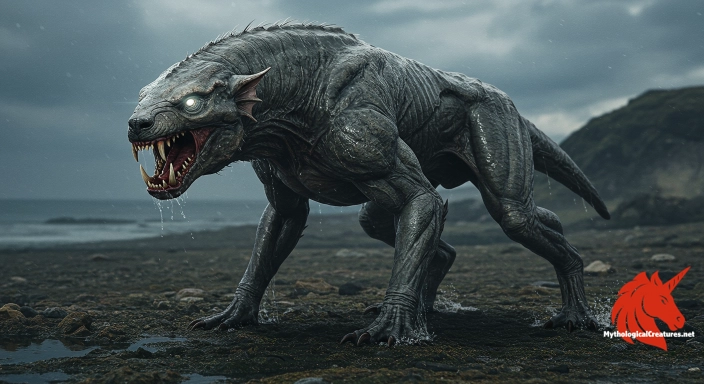Adhene: Adhene are Manx fairies known as the Children of Pride, believed to be fallen angels with a mischievous streak.

Adhene
Adhene - Adhene are integral to Manx cultural heritage, symbolizing both the bounty and unpredictability of nature, while embodying the enigmatic legacy of fallen angels.
Origins & First Encounters
The Adhene have enchanted the Manx landscape for centuries, emerging as a captivating blend of celestial nobility and earthbound mischief. Born from a myth that intertwines ambition with divine fall, they are believed to be fallen angels too resplendent for the torments of hell. Their story first surfaces in old Manx traditions that describe them as the Children of Pride, emblematic of both grace and defiance. Tales passed down through generations portray them as beings whose complex nature embodies both benevolence and caprice. Their intriguing dual character—capable of bestowing blessings or causing mischief—illustrates the intricate relationship between humans and the unseen. As custodians of both nature’s bounty and its inherent unpredictability, the Adhene dwell at the crossroads of fate and fortune. Their narratives provide insights into the ancient cultural fabric of the Isle of Man, echoing themes of pride, aspiration, and the limitations of mortal influence. The legends of these faerie beings continue to evoke wonder and caution among those who heed the call of the mysterious world beyond.
Their myth remains a testament to a legacy where celestial myth and earthly life intertwine in a dance of perpetual fascination.
Source Texts & Tale Variants
Early records of the Adhene are rooted in oral traditions that were later transcribed by meticulous folklorists on the Isle of Man. Many of these narratives were collected during the 18th and 19th centuries and have since been cherished as part of the island’s rich heritage. Various local manuscripts and ballads repeatedly reference the appellation Cloan ny moyrn, highlighting their connection to pride and ambition. Folktales variably detail their enchanting interventions in daily life, whether through occasional benevolence or mischievous escapades involving families. Some accounts describe encounters where the Adhene stealthily appropriated infants or wives, while others recount moments of unexpected kindness. The diversity in their portrayal has inspired a range of story variants, each colouring the Adhene with unique attributes. These primary sources, although steeped in regional flair, share common themes that emphasise the creatures' uncanny abilities and unpredictable nature. The multiplicity of these narratives underscores a dynamic interplay between tradition and myth, perpetuating the enigmatic allure of the Adhene.
Regional folklore has thus ensured that the tales of the Adhene continue to evolve with each retelling, enriching the myth with layers of depth and intrigue.
Form & Powers
The Adhene are typically perceived as diminutive figures, often described as being about the size of a small child when they choose to reveal themselves to mortals. Their form is frequently ephemeral, as if woven from the very fabric of twilight and mystery. Fine features, delicate yet impish, give them an appearance that is both angelic and mischievously inviting. Observers have noted that their eyes can glimmer with an almost otherworldly luminescence, reminiscent of stars peering through a shadowed sky. Their skin, sometimes imagined as pale and radiant, contrasts strikingly with the dark and rugged backdrop of the Manx landscape. Subtle hints of iridescence or a transient aura may accompany their movements, reinforcing an impression of fleeting beauty. The Adhene are often depicted with pointed ears and an agile grace that suggests they belong to a realm beyond the ordinary. Each artistic portrayal contributes small variations, hinting at an ensemble of possible forms while never straying far from their iconically diminutive stature.
Their ever-changing physicality encapsulates both the fragility and strength of myth, making them as elusive as they are enduring.
Regional Faces
While deeply rooted in Manx folklore, the tale of the Adhene resonates with variations across neighbouring Celtic regions. In Ireland and Scotland, for instance, similar beings known as the Aos Sí and the Sidhe reflect comparable traits, though each carries its own regional flavour and narrative nuances. Unlike their Manx counterparts, these fairies are sometimes depicted more as ethereal guardians of nature rather than fallen celestial entities. The Manx tradition uniquely emphasises the dual nature of the Adhene, with legends describing them both as custodians of natural abundance and as mischievous interlopers in human affairs. The rugged maritime and agrarian backdrop of the Isle of Man informs specific rituals and seasonal customs linked to the Adhene, such as the heralding of bountiful harvests or successful fishing expeditions. Other regional adaptations may portray them in a softer light, aligning them with celebrations of light and fertility. Yet, across all accounts, these variations maintain the core essence of fairytale beings who traverse the borders between the spiritual and the earthly. Such rich regional dialects attest to the universality of faerie lore while honouring local traditions and unique interpretations.
This interplay between broader Celtic themes and Manx particularities ensures that the legend of the Adhene remains both distinctive and widely resonant.
Cultural Parallels
The Adhene share intriguing parallels with other fae entities across diverse mythologies, reflecting a common human fascination for the liminal spaces between the divine and the mundane. Their depiction as fallen angels resonates with a universal theme found in various traditions, where celestial beings face exile for their transgressions yet continue to interact with the mortal world. Similar to the Welsh Tylwyth Teg or the Irish Aos Sí, the Adhene evoke a sense of both wonder and wariness through their capricious nature. Their dual capacity for kindness and chaos mirrors the character of trickster figures found in many European and even non-European mythologies. This complex mixture of celestial grace and mischievous ingenuity places them alongside other legendary figures who defy simple categorisation. Comparative analysis reveals that many cultures have created narratives where otherworldly powers balance the scales between benevolence and havoc, reflecting shared human concern with pride and the limits of ambition. The Adhene thus form part of a broader tapestry of myth that spans continents, linking the realms of folklore in unexpected ways. These cross-cultural connections deepen our understanding of the fae as symbols and cautionary figures in stories across the world.
Such comparative insights highlight the enduring allure of faerie legends as manifestations of both beauty and unpredictability in human culture.
Legacy & Modern Evolution
The evolution of the Adhene myth reflects a shifting cultural landscape that has transitioned from seafaring cautionary tales to vibrant illustrations in modern fantasy. Early narratives painted them as beings capable of abductions and mysterious interventions, underscoring the risks inherent in human interactions with the supernatural. Over the centuries, however, their portrayal has softened and broadened, allowing for interpretations that celebrate their mystical charm as much as their capricious nature. In contemporary literature and art, the Adhene have emerged as symbols of nature’s inherent mystery and the eternal struggle between order and chaos. Modern reinterpretations frequently explore their ambiguous moral standing, appealing to audiences who appreciate the complexity of faerie folklore. The fairy-tale quality of their legends continues to inspire visual art, music, and even digital media where their ethereal image is reimagined with contemporary sensibilities. Celebrations and cultural festivals on the Isle of Man pay homage to their legacy, reaffirming their status as integral to the island’s mythical heritage. The enduring influence of the Adhene lies in their ability to adapt to the times, remaining as a compelling emblem of the past while speaking to the creative imaginations of the present.
This modern legacy of the Adhene ensures that, regardless of the era, their enigmatic spirit continues to captivate and inspire, bridging the gap between ancient myth and modern wonder.
Interesting Fact
Despite their divine origins and potential for benevolence, the Adhene's penchant for mischief has earned them a reputation as both harbingers of abundance and agents of unpredictable disruption in human affairs.
Quick Creature Info
Features:
Associations:
Our Mythic Legendary Rating:

Also Sometimes Known As:
Habitat:
Supernatural Powers:
Physical Attributes:
Abilities:
Behavior:
Weaknesses:
Lore:
Related Creatures, Tales or Lore
- SSidhe
- TTylwyth Teg
- PPixies
References
Discover Another Mythical Legend You May Not Have Heard Of?
Uncover the mysteries of ancient folklore and expand your knowledge of legendary beings from cultures around the world.
Dare to Meet the Onchú....
Mythical Disclaimer: The images and data on this site are derived from various historical and literary sources, but we have found that many myths often have multiple versions and interpretations across references, sometimes contradictory. As a result, these creature depictions are artistic interpretations—imaginative blends of folklore, legend, and a dash of AI guesswork. Because creature descriptions vary widely, our illustrations and accompanying information represent our best effort to honor mythology while bridging creative gaps. Enjoy these interpretations—just remember, we've done our best to respect the stories and validate available data, but in the realm of mythology, details often shift, imagination leads the way, and nothing is ever set in stone!
Curated by the Mythological Creatures Team (rev. May 2025)
